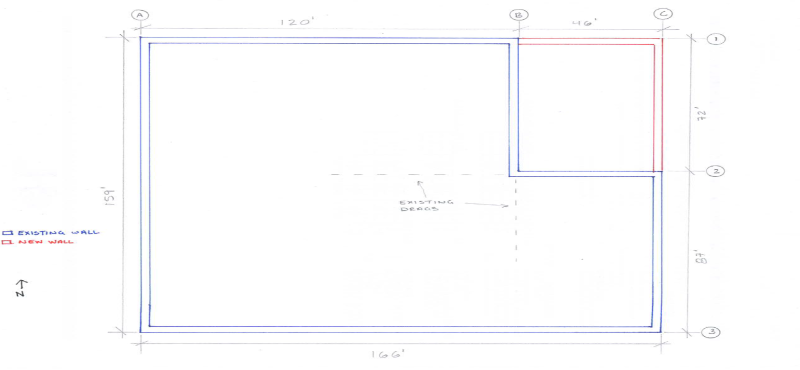ivanga7
Civil/Environmental
- May 20, 2016
- 40
We are doing an addition to an existing 18 feet high concrete tilt-up building with a flexible roof diaphragm (See attached for layout). There is an existing re-entrant corner with its respective drag lines. Our addition consists of squaring off the building by adding to new walls.
My question is:
Is there a way to neglect the lateral resistance of the walls that make up the re-entrant corner and assume that the outer walls of the newly created box will resist the seismic loading?

My question is:
Is there a way to neglect the lateral resistance of the walls that make up the re-entrant corner and assume that the outer walls of the newly created box will resist the seismic loading?

